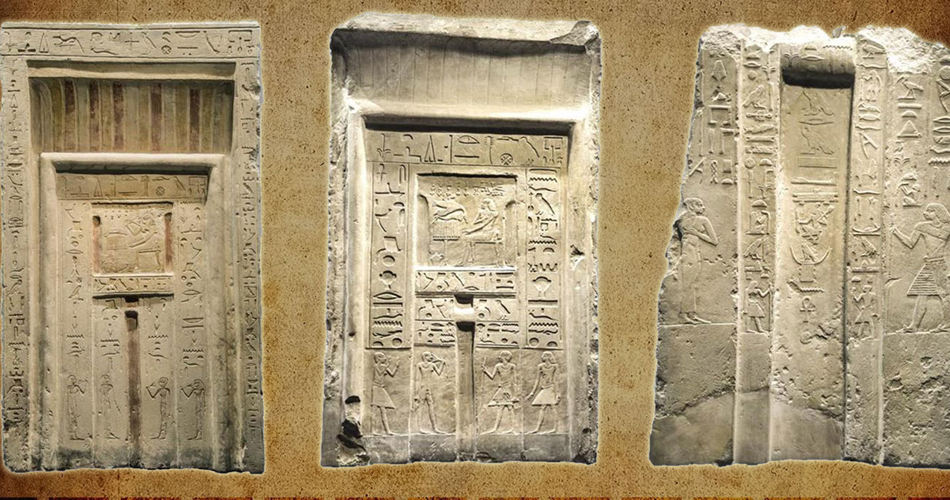False Doors
Within the back of mortuary temples and tombs of ancient Egypt lies the false doors which acted as a gateway to the underworld. The false doors were believed to be a link of communication between the worlds of the living and the dead, by which the spirit of the deceased could enter and exit from the underworld. The family member of the deceased believed the door could be used to interact with the dead as the family of the deceased placed offerings in front of the door so it was uncommon to find
The Structure Of the False Doors
The false door was carved from a single block of limestone or wood, they would pint the doors with black speckles to resemble granite, and in the center of the door is a flat panel with several pairs of door jambs are arranged around in order to give the illusion of depth, frames, and a passageway and carved directly above the central panel of the door is a semi-cylindrical drum. The doors also hold many inscriptions and texts showcasing the virtues of the deceased and expressing positive wishes for the afterlife plus a series of offering formulas that were believed to allow the deceased to partake in offerings presented to the major deities in the name of the king, or in offerings presented directly to the deceased by family members, it also included a cruse to those who would harm the deceased and a blessing to anyone who would make an offering.
The History of the False Doors In Ancient Egypt
The false doors were transformed countless times through history as it was used first in the mastabas of the third dynasty of the old kingdoms as it shows on Djoser Saqqara temple, but they were derived from the niched palace façade motif of the early dynastic period. The use of the false doors became common and universal in the 4th through 6th dynasties and even the style of the decoration would seem to change as images of the deceased emerging from the false door. During the new kingdom of Egypt (155-712 BC) the false door was associated with a chapel known as “The Hearing Ear” which was located in the outer wall near the back of the temple close to the sanctuary as it was believed that it would act as a direct manner of communication with the gods. After the end of the new kingdom, the popularity of the false doors diminished and was replaced by stelae, later on, the false doors became highly popular in the interiors of both houses and tombs of ancient Rome.



